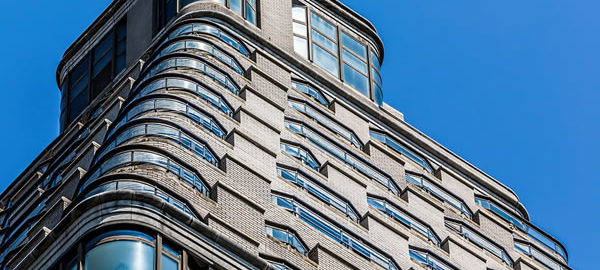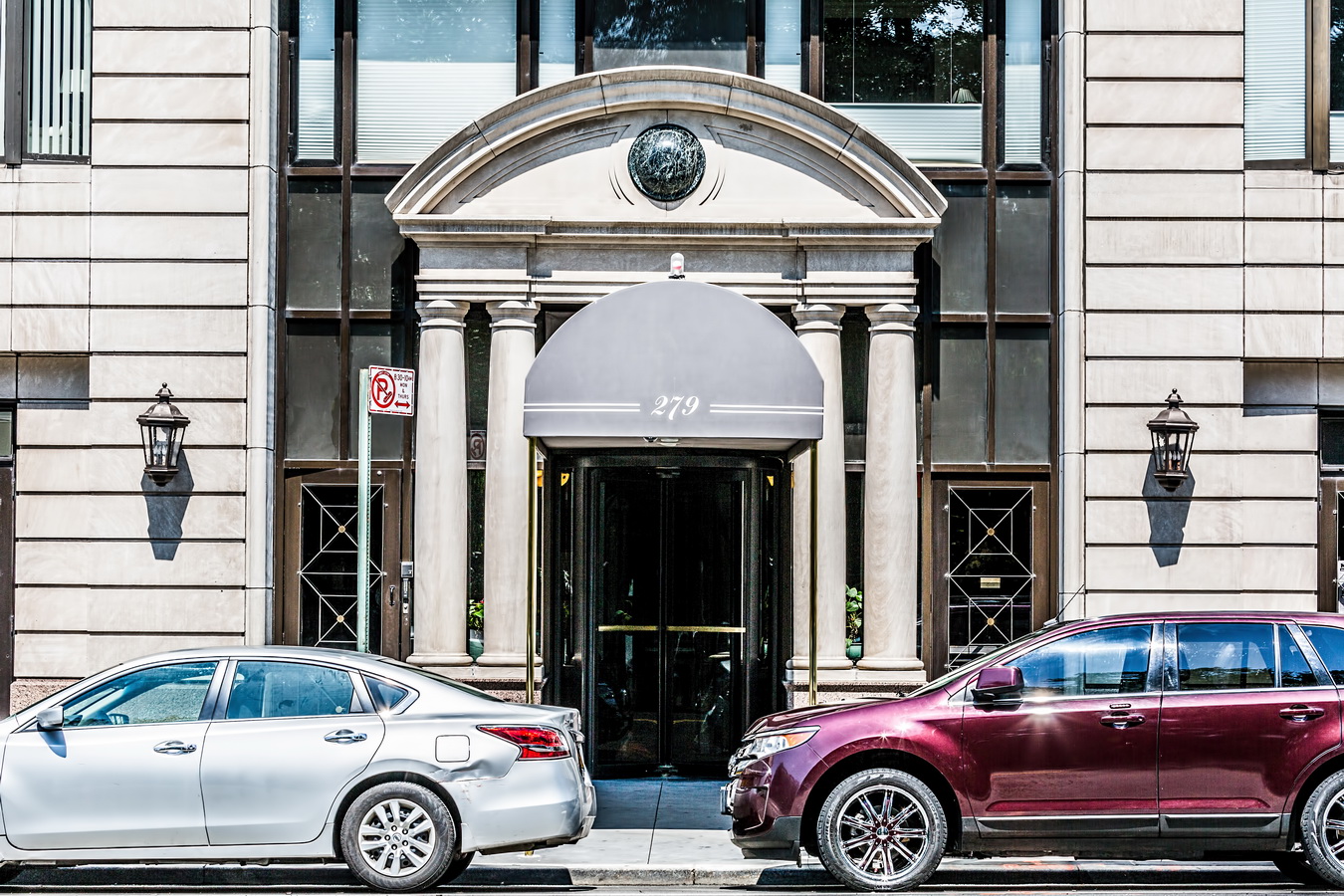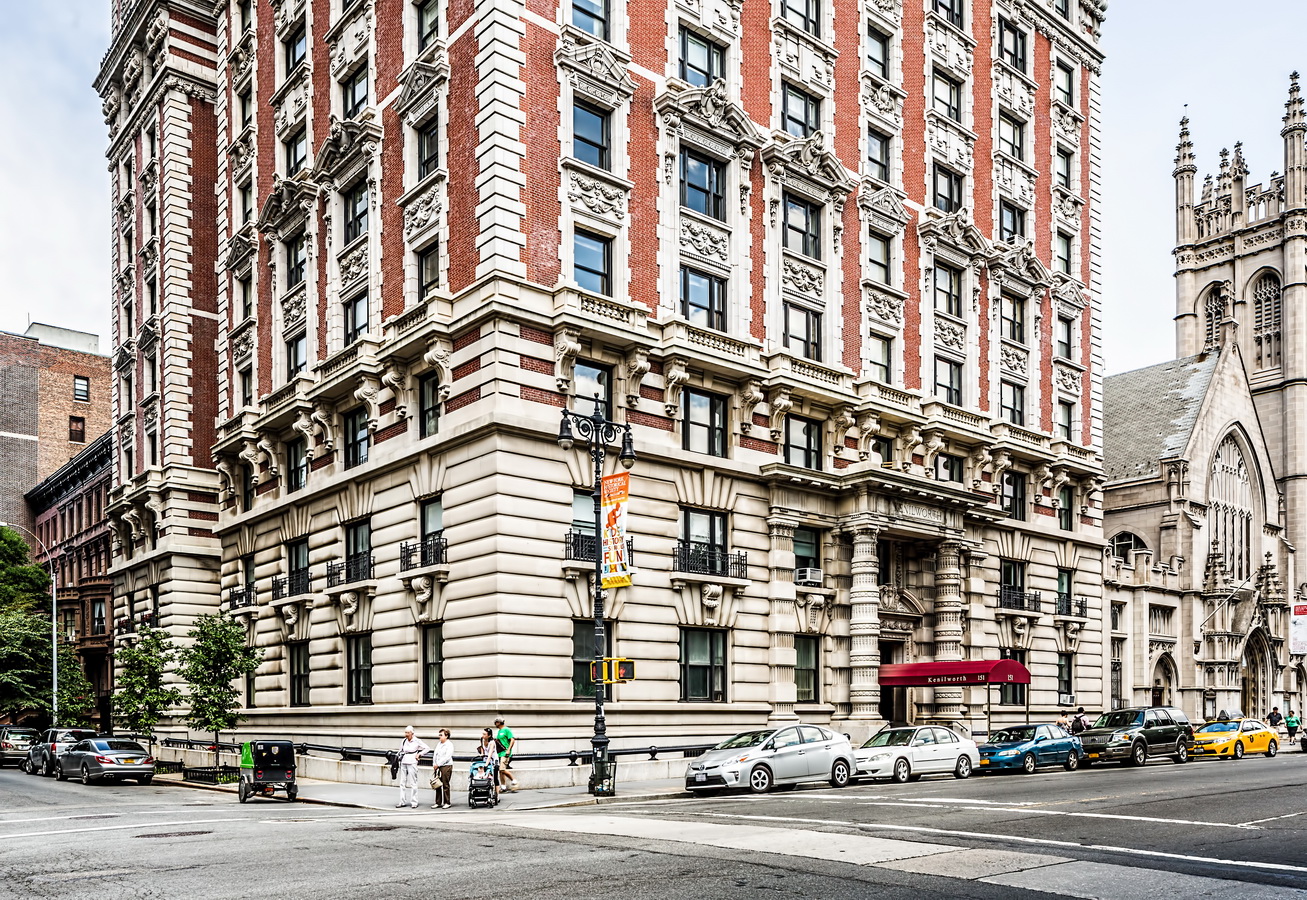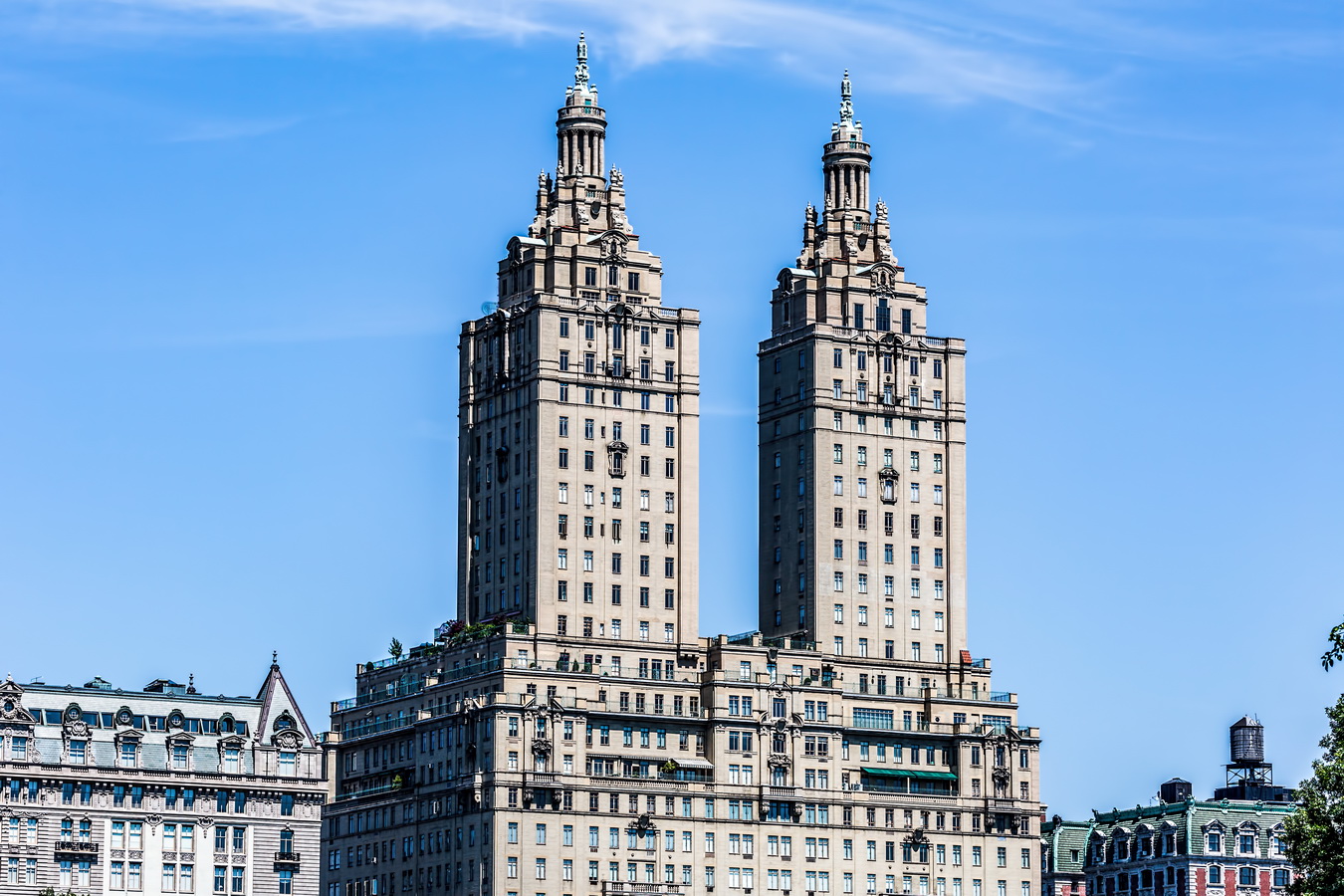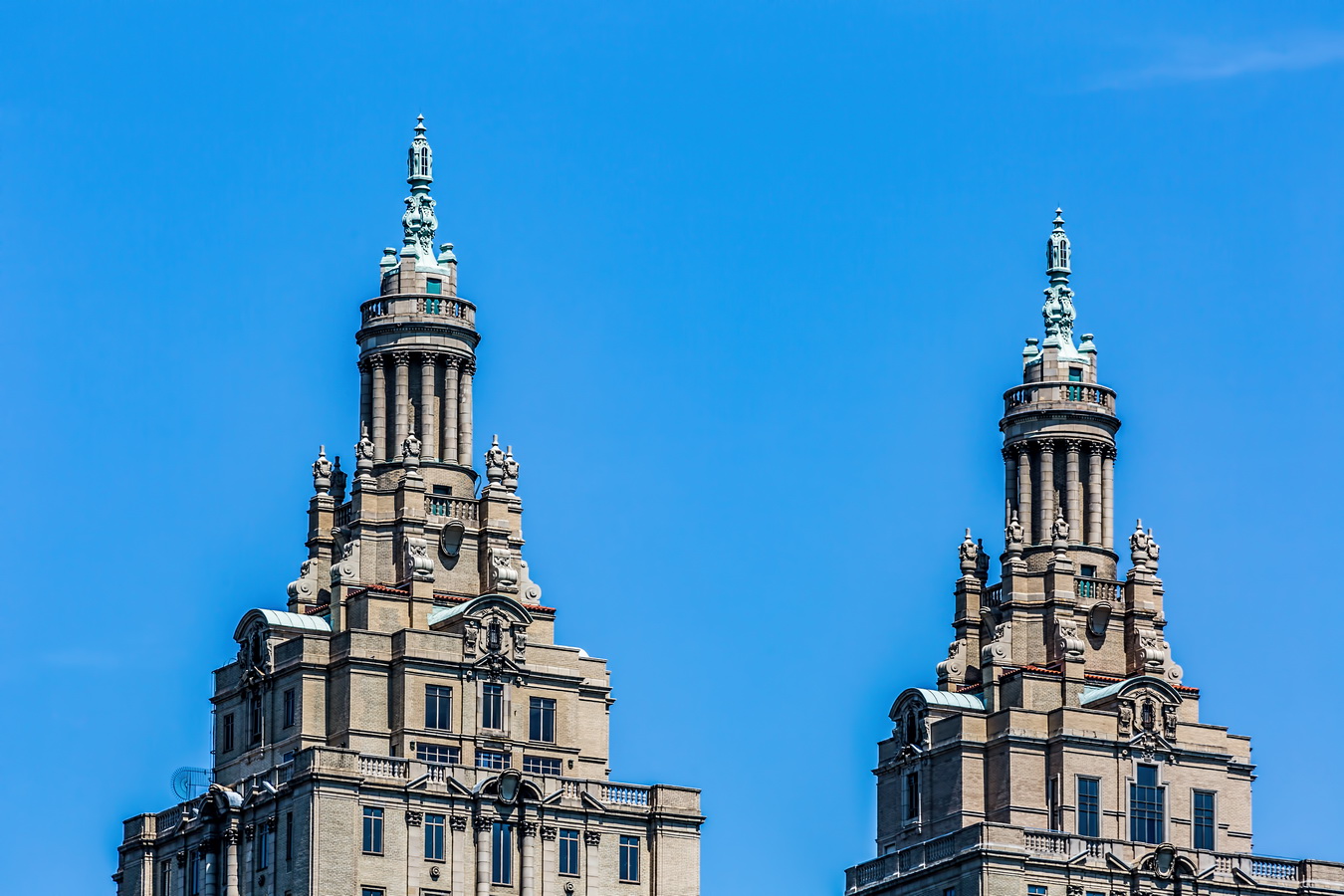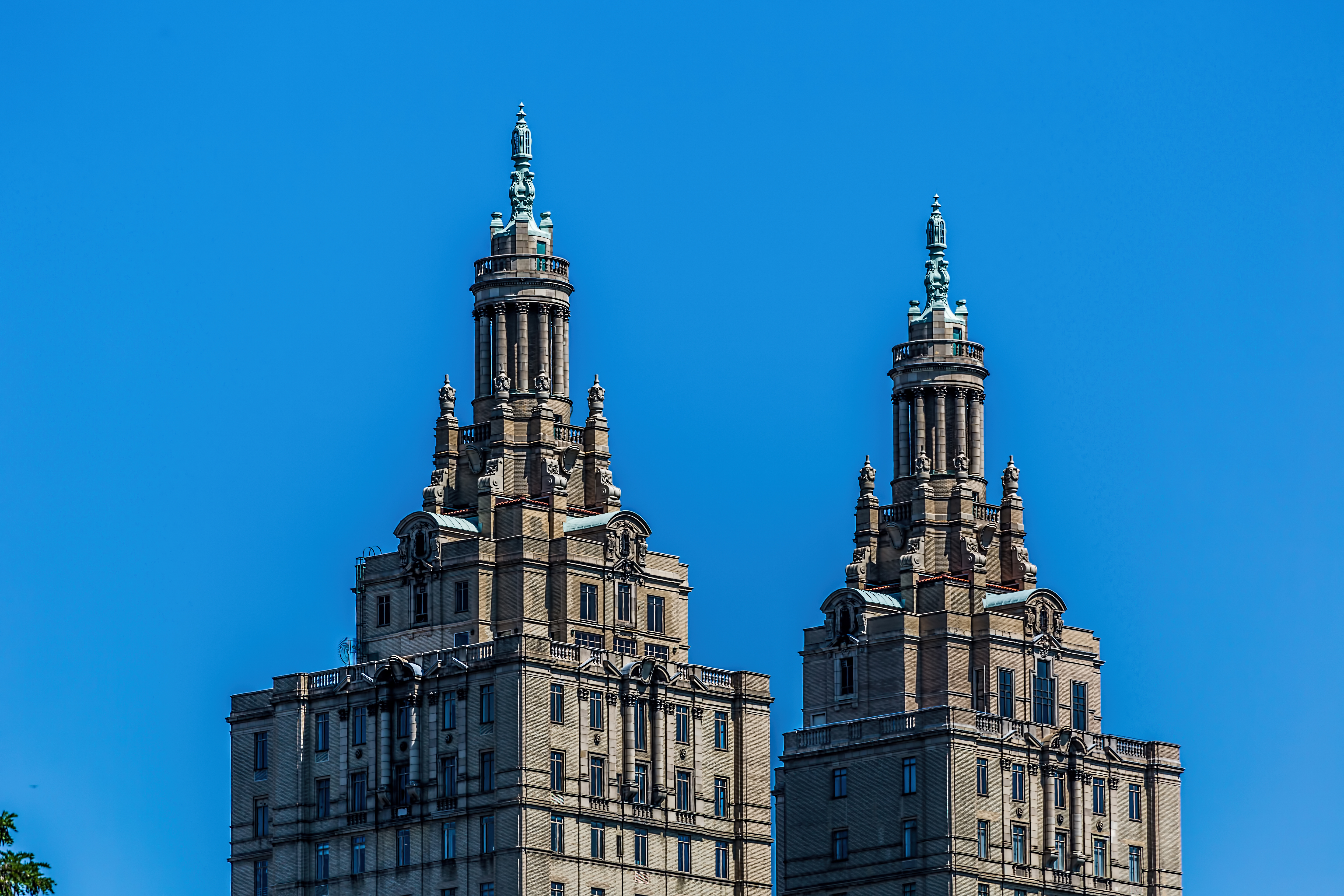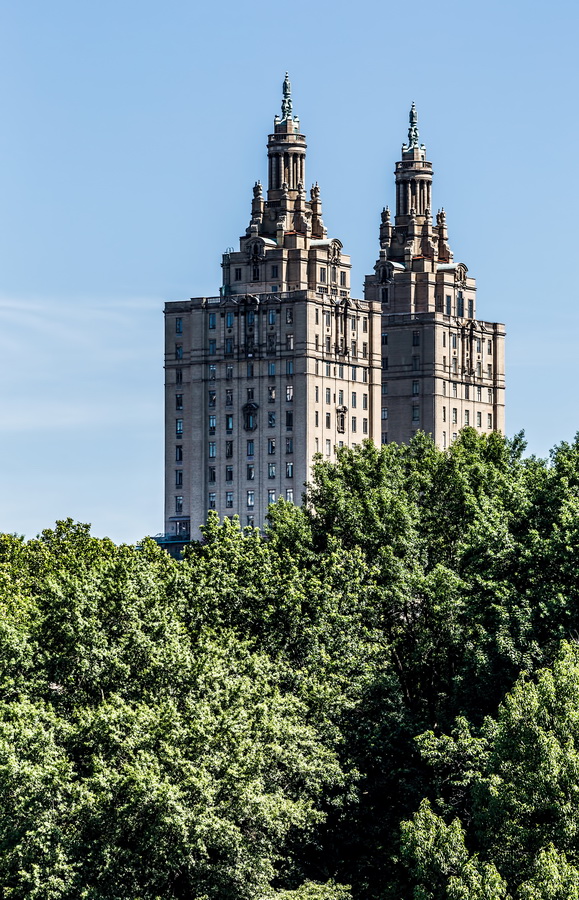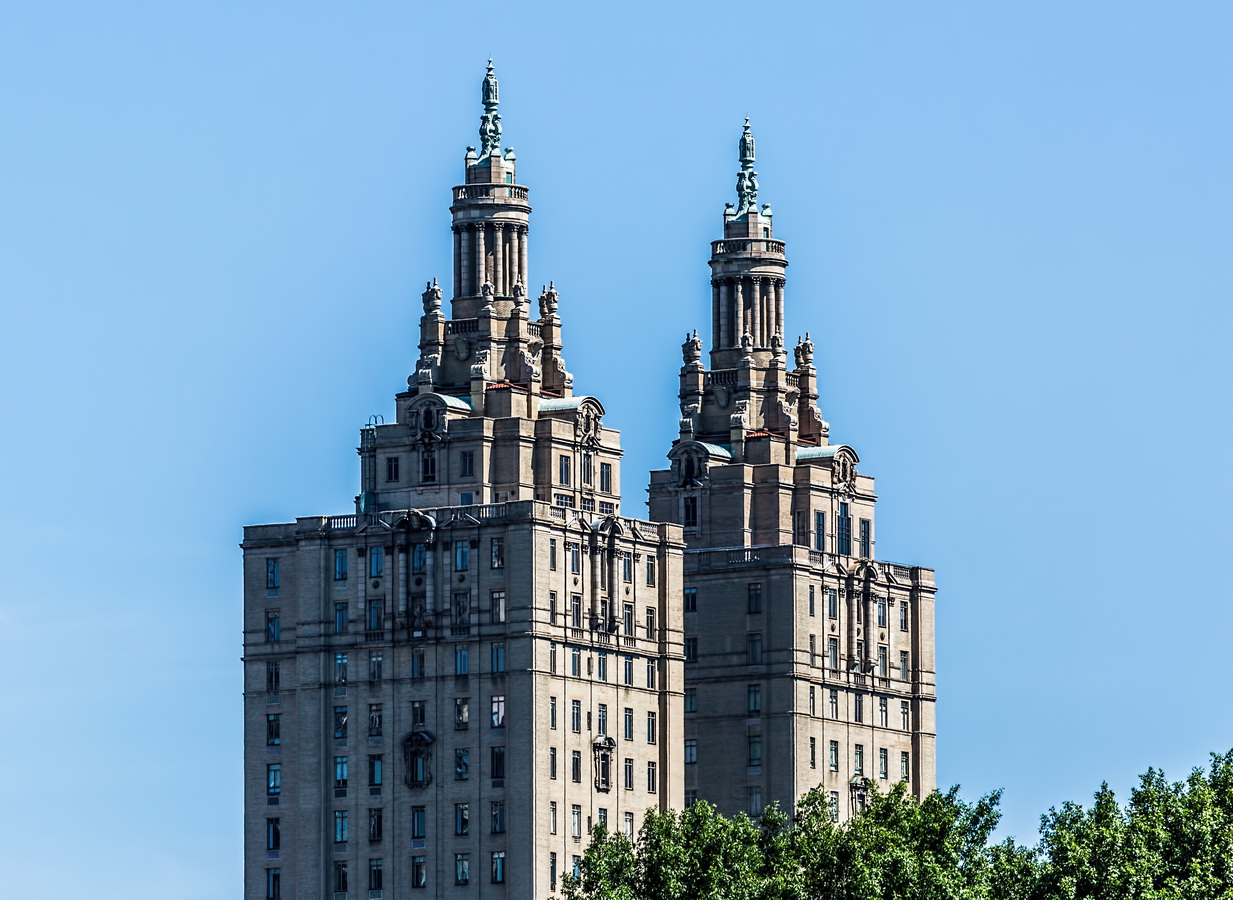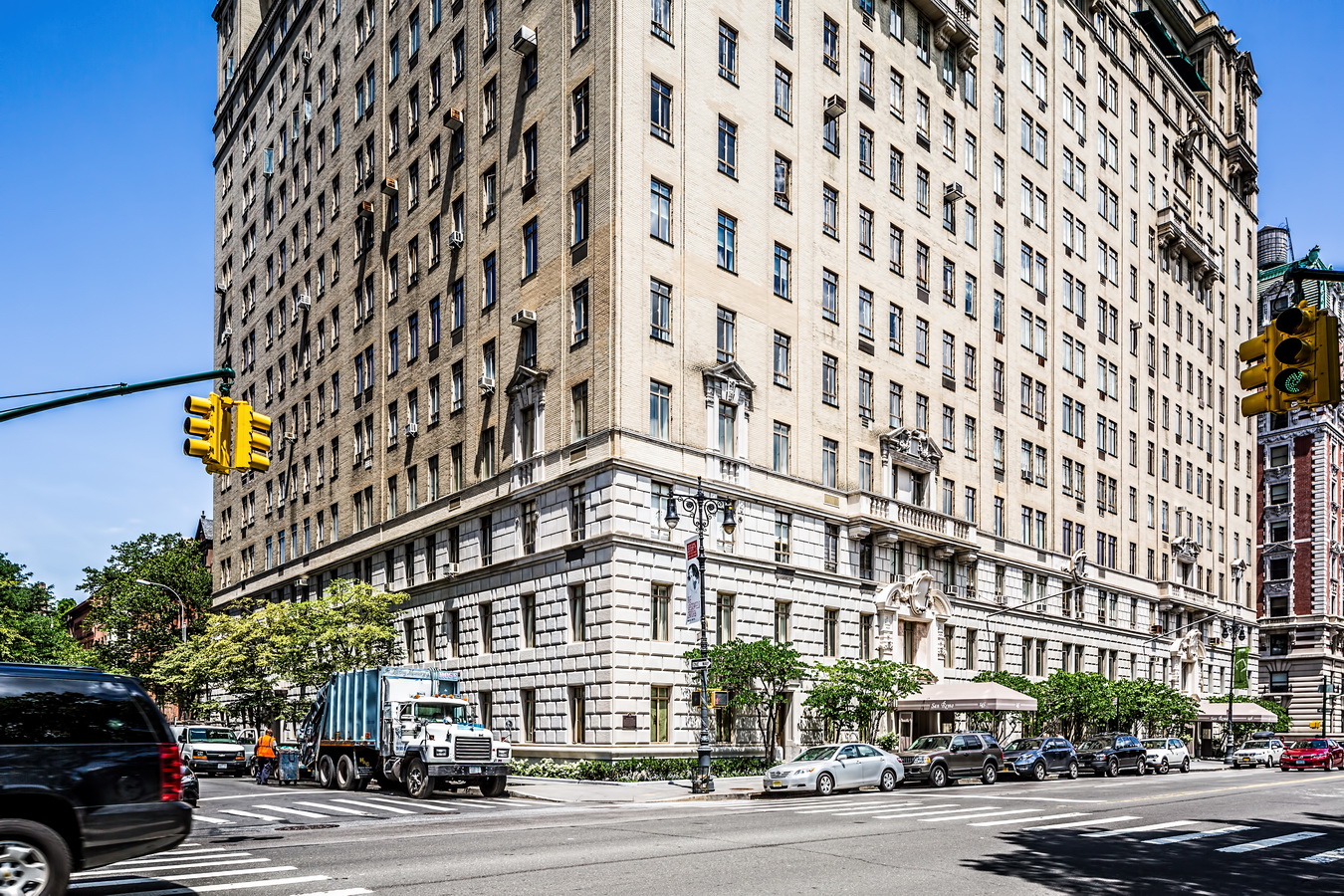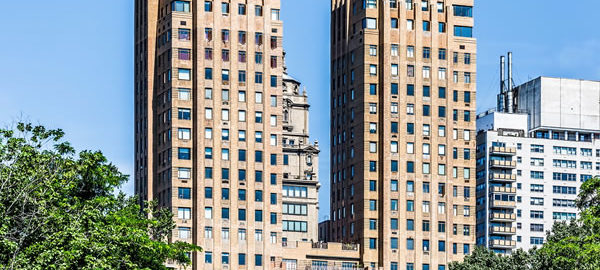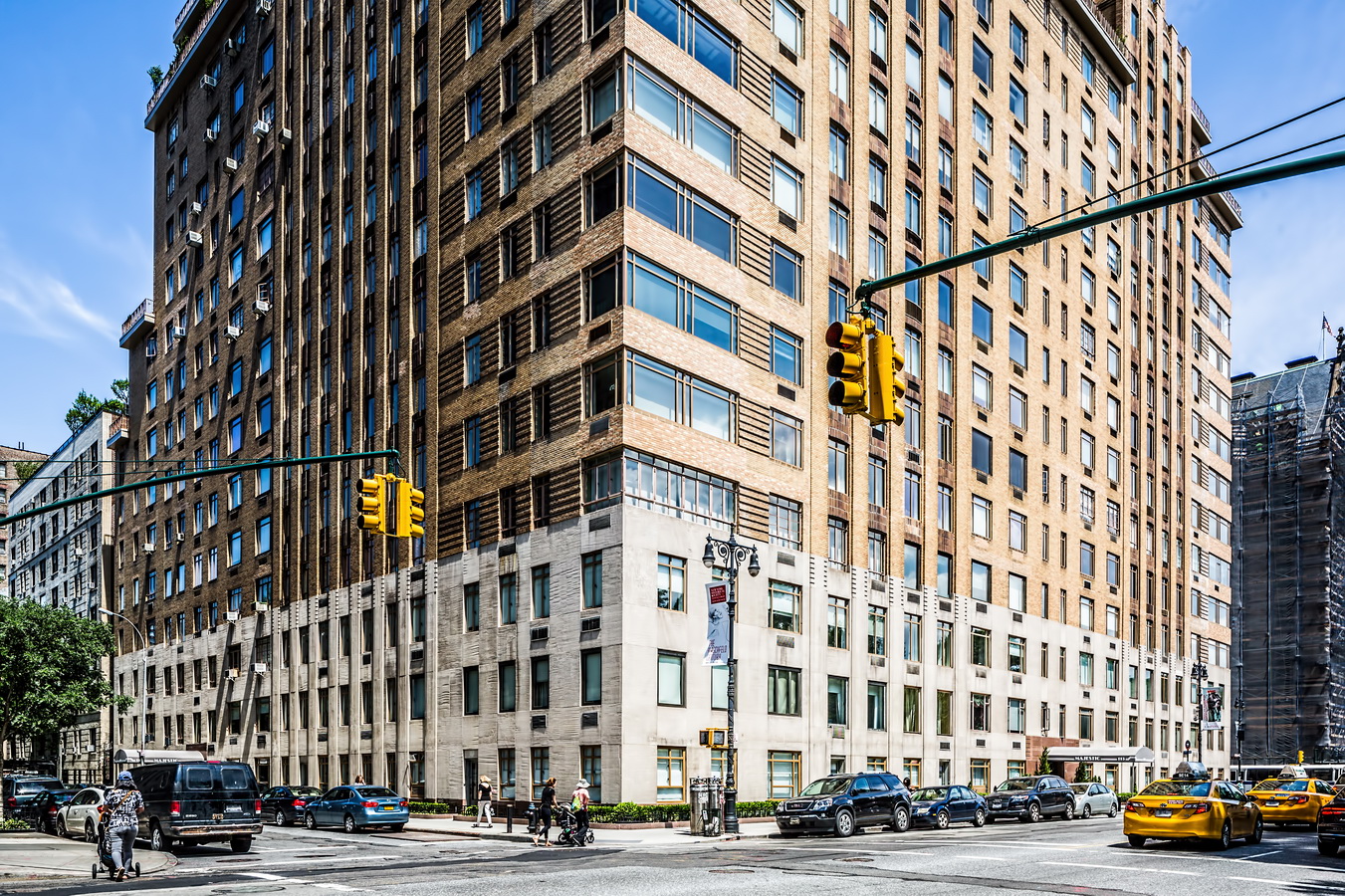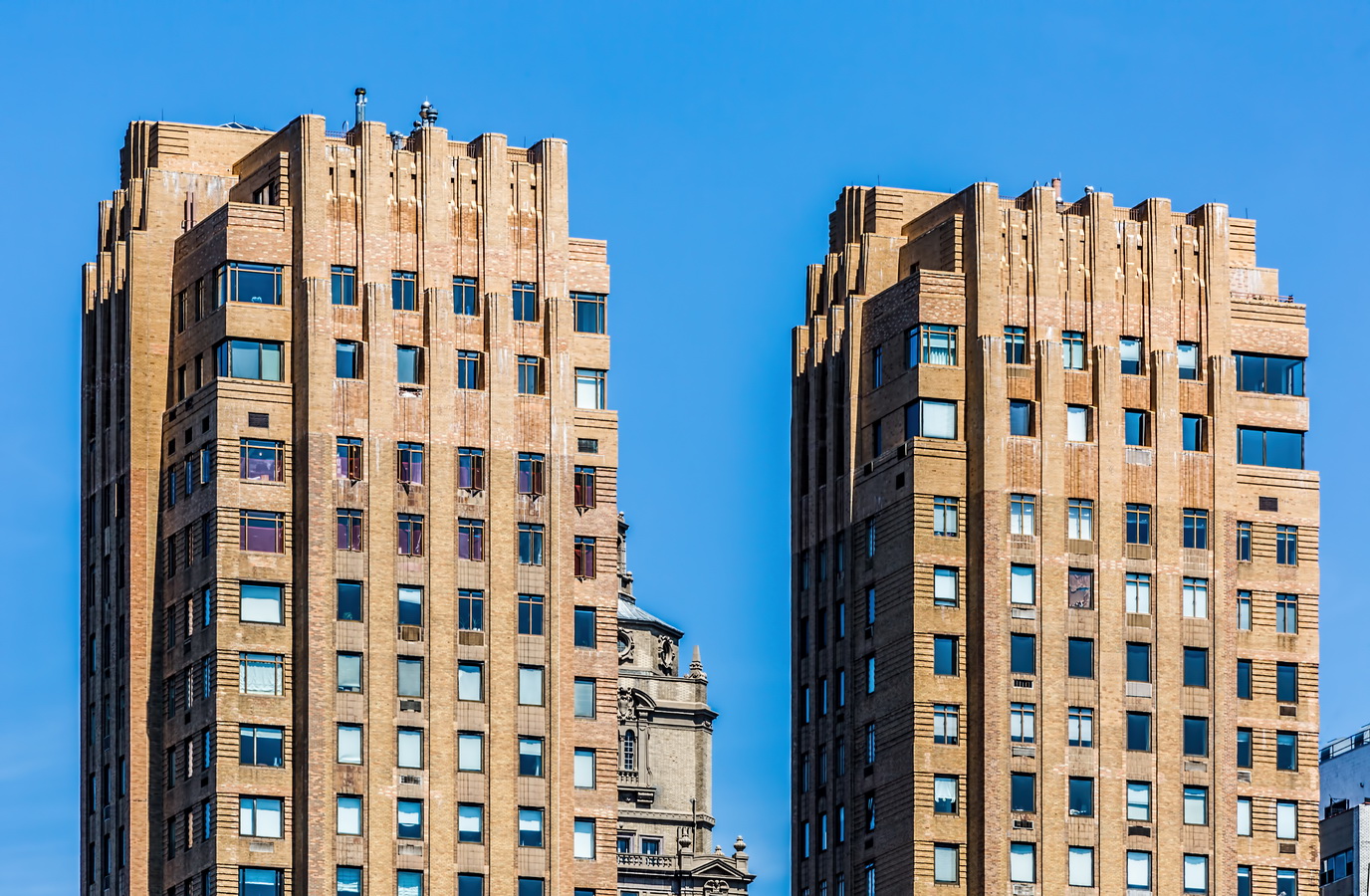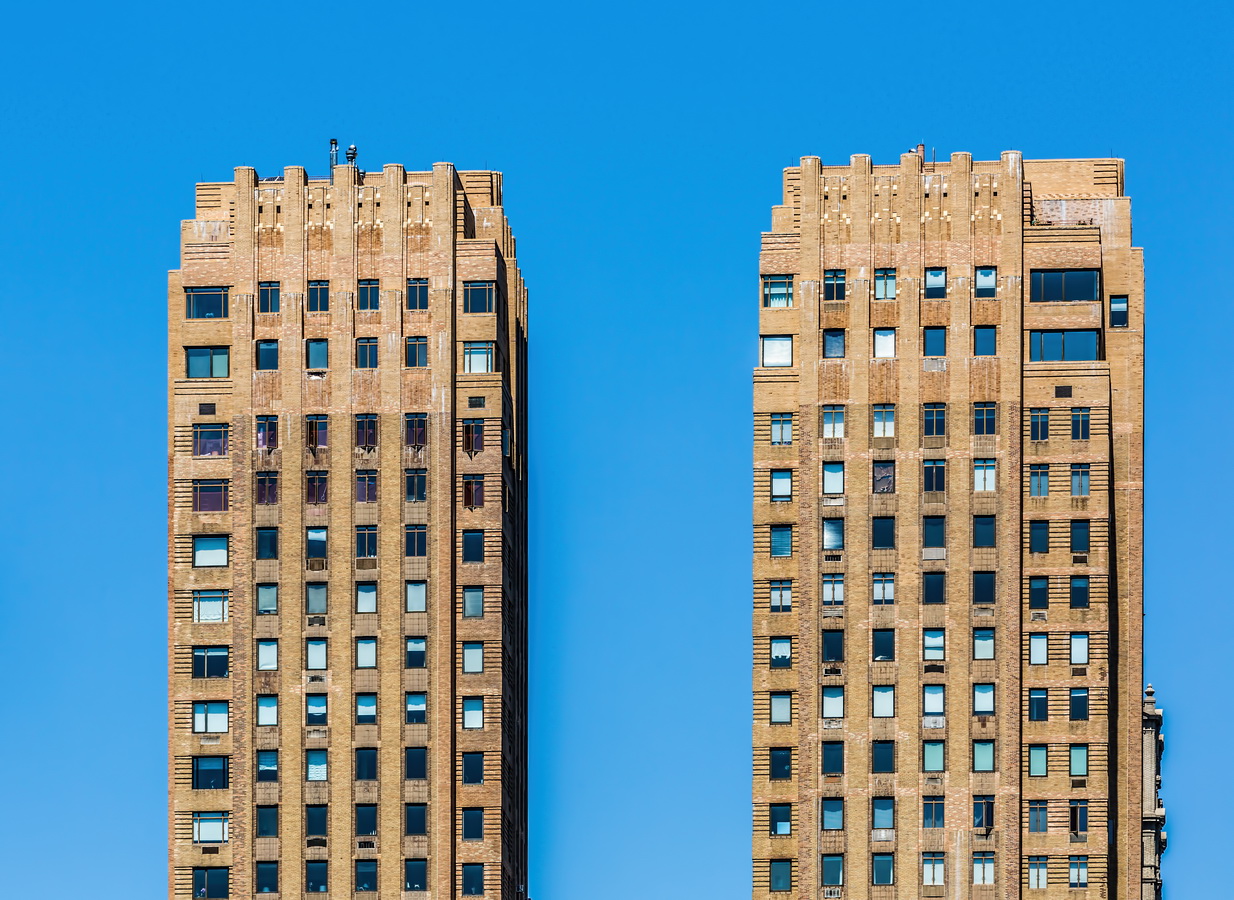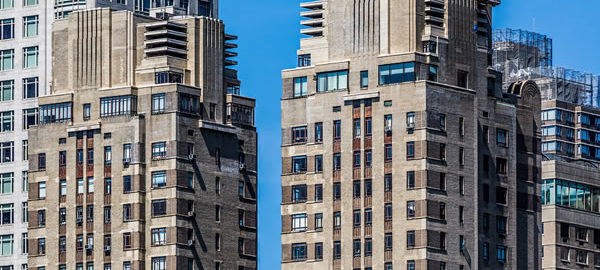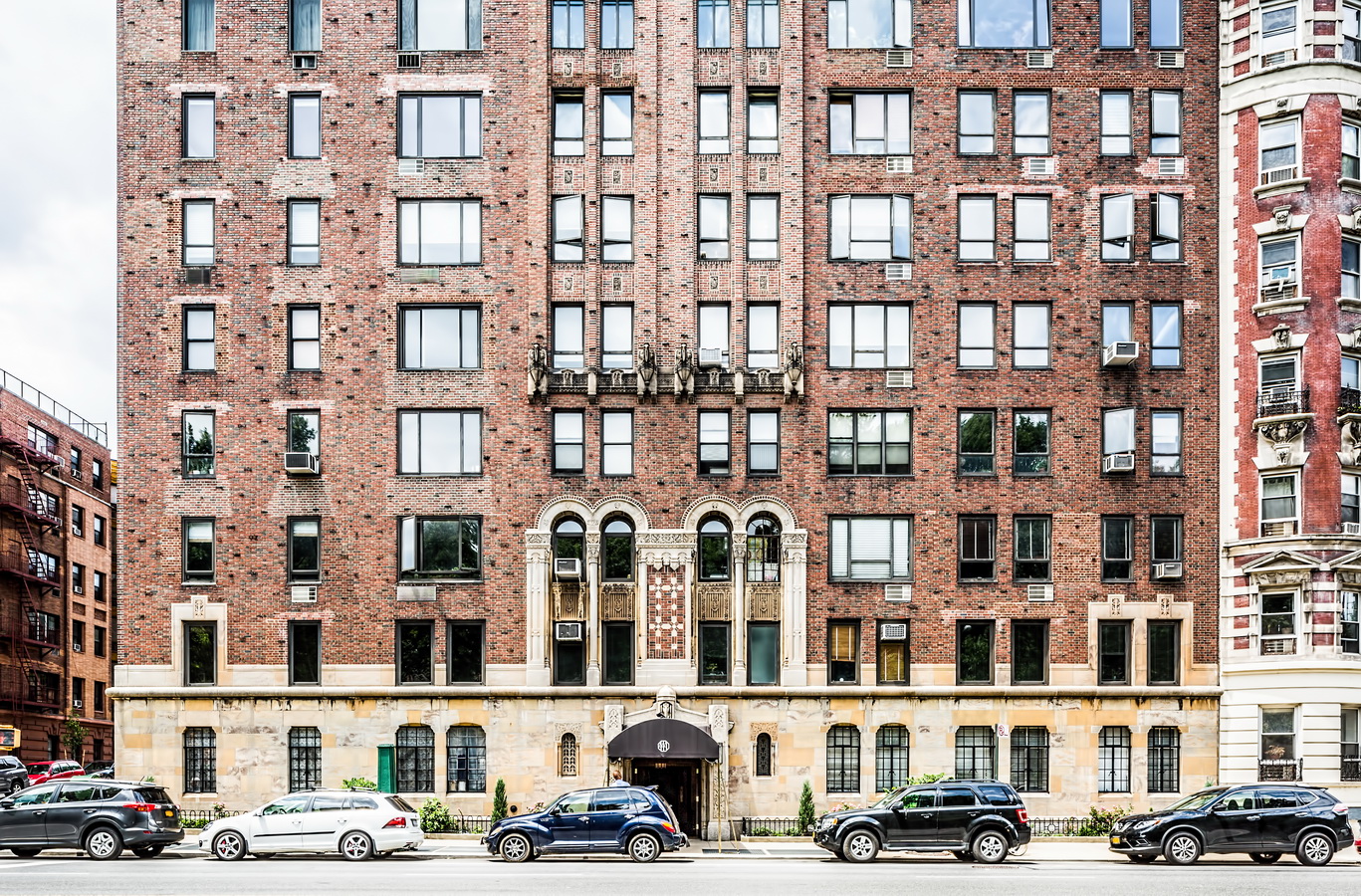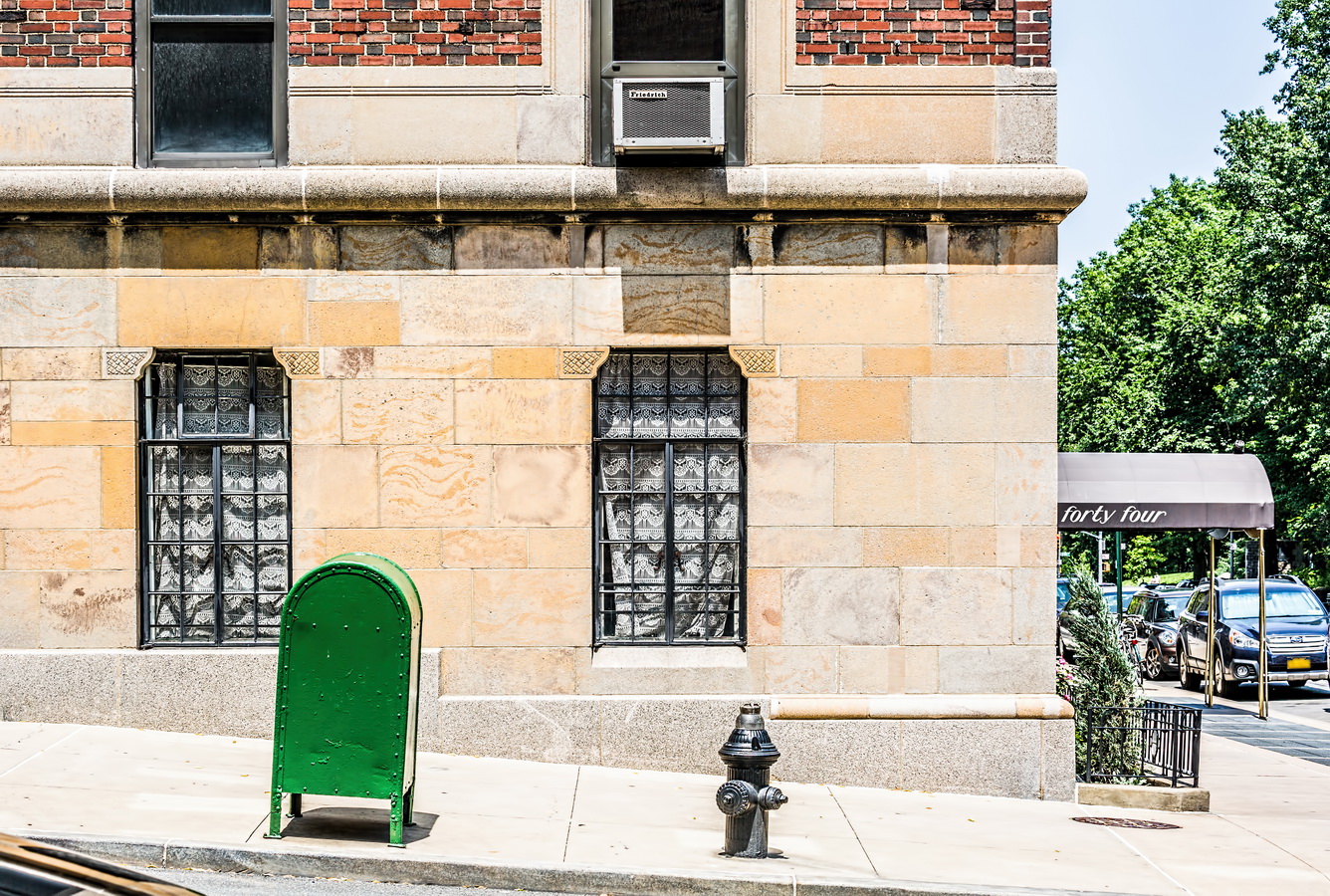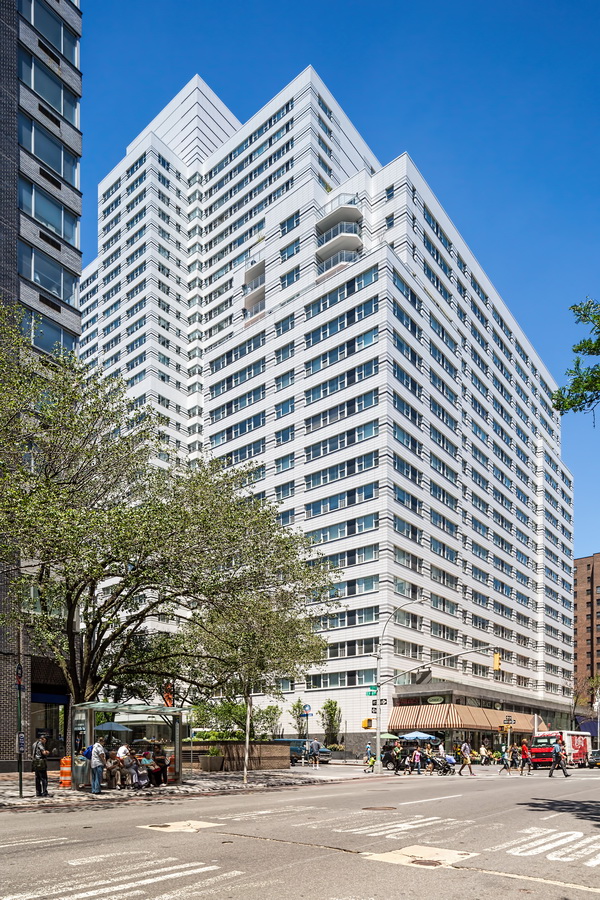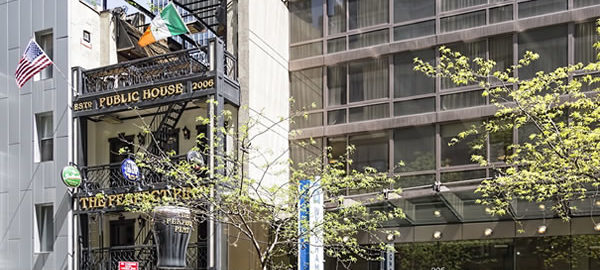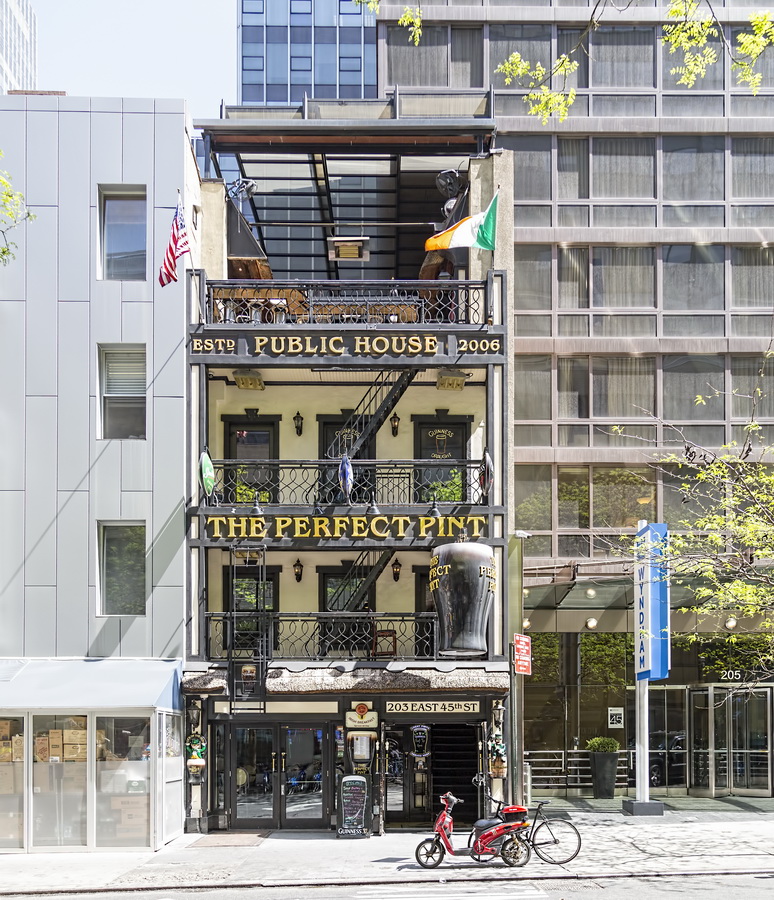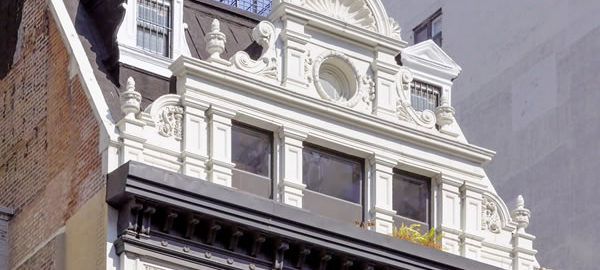279 Central Park West, completed in 1988, is among the youngest buildings on the avenue, yet it is part of New York’s Upper West Side/Central Park West Historic District. I suspect that it’s included because it was easier for the NYC Landmarks Preservation Commission to leave the building in the district than to specifically exclude it.
The architect, Constantine Kondylis, is often associated with Donald Trump projects (including Trump International Hotel and Tower at the foot of Central Park West). But 279 Central Park West is a far cry from the black or gold glass boxes that The Donald is fond of.
As a modern building, it lacks the ornate facades typical of the district, but 279 is still pleasing for its three-story limestone base, inset bay windows, curved corner windows, and eight terraced setbacks. Thanks to luxury amenities and location (or in spite of location, if one doesn’t want to be so far uptown), apartments in this condo have million-dollar price tags. Or you can rent. At this writing, there’s a three-bedroom, 2,855 sq. ft. duplex available for just $22,000 a month.
279 Central Park West Vital Statistics
- Location: 279 Central Park West at W 88th Street
- Year completed: 1988
- Architect: Constantine Kondylis
- Floors: 23
- Style: postmodern
- New York City Landmark: 1990 (despite its age, this building is part of the Upper West Side/Central Park West Historic District)
279 Central Park West Recommended Reading
- Wikipedia entry
- NYC Landmarks Preservation Commission designation report
- The New York Times Big Ticket: Heat, Light and Height, Sold at $8.15 Million (March 1, 2013)
- The New York Times 279 CPW – Apt. B-34 listing
- The New York Times About Real Estate; Central Park West Gets Luxury Condominiums (November 10, 1989)
- City Realty review
- Street Easy NY listing (includes floor plans)
- Emporis database
